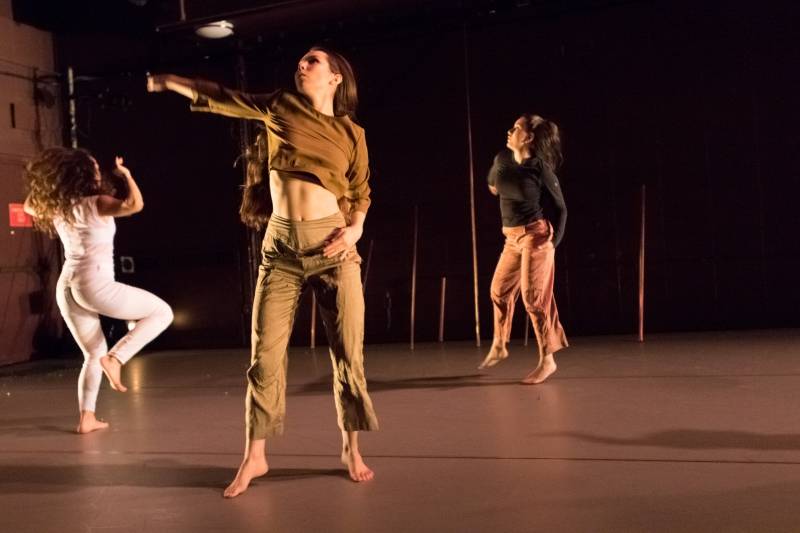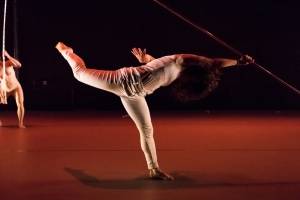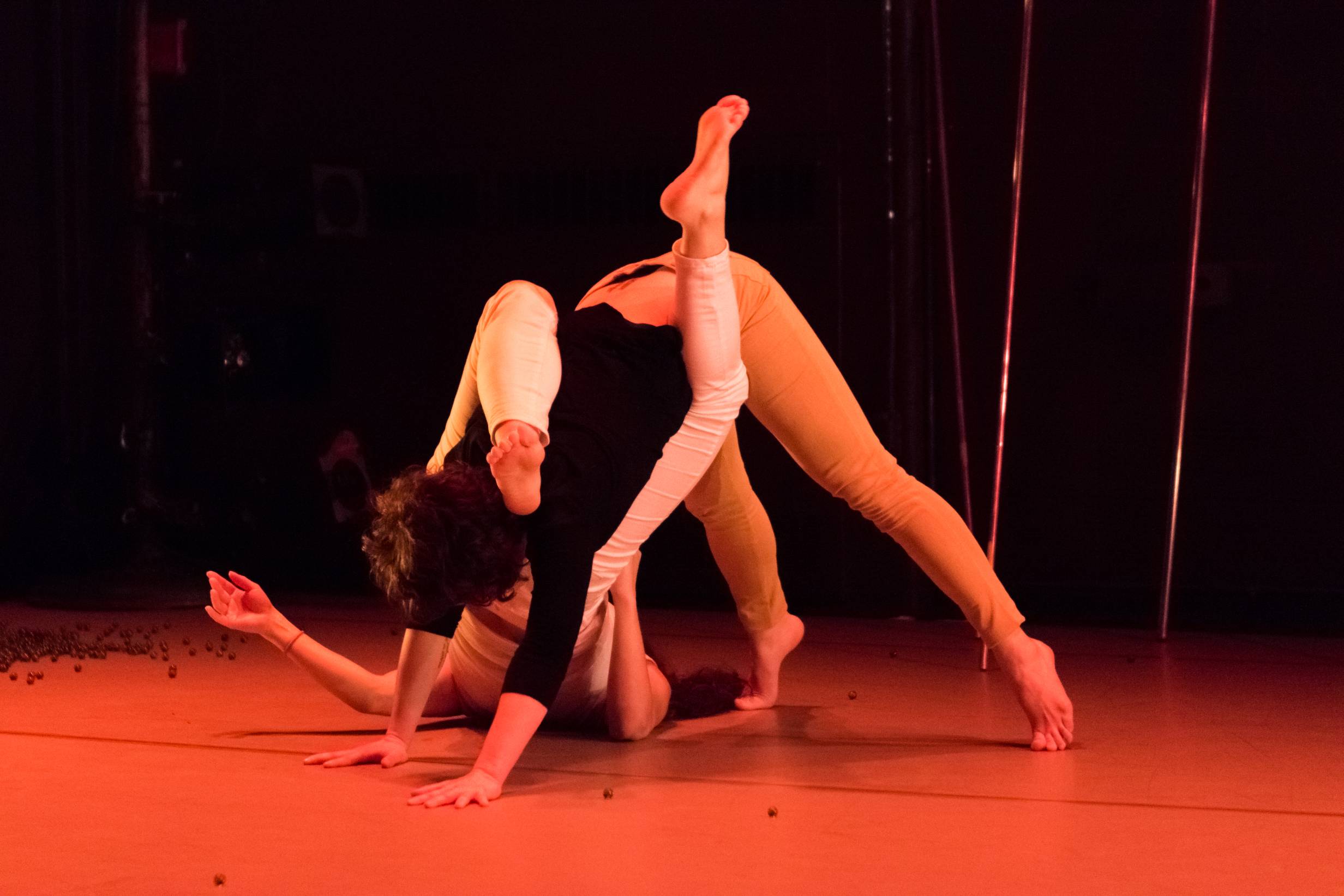After leaving Charli Brissey’s Miraging, performed on March 2nd at Krannert Center’s Studio Dance One, I turned to my friend who joined me for the evening and said, “while I recognize that they were both master’s, I think I lean more towards Monet than Picasso.”
This feeling of slight puzzlement, which hopefully explains my analogy of preferring Impressionism to Cubism, was what accompanied me for the majority of Miraging. Performed by extremely talented dancers Charli Brissey, Catalina Hernandez, Chloe Nagle, Em Pike, Daisy Rueda and Natalie Stehly, according to the playbill Miraging was the physical representation of Brissey’s “ongoing choreographic and theoretical research regarding entanglements of matter and materiality between human and nonhuman subjects and objects.”
Beginning informally, with two dancers simply walking from the audience to take their positions on the floor, Miraging constantly moved back and forth between the dancer’s interactions with each other and inanimate objects like copper poles, beads, and the floor itself. The entire piece was a fascinating give and take between who or what held power and who fell behind, only to be reintegrated into a powerful stomping rhythm that made me question just what the dancers were demanding from themselves, the audience as passive observers, and the world that existed beyond all of us.

Yet as intellectually stimulated as I felt throughout the entirety of Miraging, there was a point about halfway through the performance where it became so abstract, so beyond my comprehension that I struggled to maintain emotional interest in the dance itself.
Yet despite this distance, Brissey’s intriguing choreography and usage of dancer’s bodies, both clothed and semi-nude, moved and conversed with not just themselves and the objects on stage but also with the audience, and I appreciated the roles this decision gave to each of us even if we didn’t physically do anything. This performance asked us all to consider our own engagements with the spaces around us, which in turn had the important effect of asking each person to re-examine their interactions with the people around them.
 These intellectualized questions, physically manifested through Brissey’s choreography, were what I enjoyed most and what my friend and I were still talking about even two hours after we left the theater. As a student in the humanities at University of Illinois, I related to Miraging as when I write a purely academic essay, which helped me stay engaged with the performance even as my lack of understanding reminded me how much art, in all its forms, is primarily personal interpretation.
These intellectualized questions, physically manifested through Brissey’s choreography, were what I enjoyed most and what my friend and I were still talking about even two hours after we left the theater. As a student in the humanities at University of Illinois, I related to Miraging as when I write a purely academic essay, which helped me stay engaged with the performance even as my lack of understanding reminded me how much art, in all its forms, is primarily personal interpretation.
But like a Picasso painting, which I may not typically regard as visually “beautiful,” Miraging was not always easy to watch, but it consistently pushed physical and relational boundaries that, particularly “in this current historical moment,” need to be re-examined, questioned and explored to their very limits.
In that regard Brissey choreographed an incredible piece of work, and while I still consider myself more of a Monet fan, I left with a greater appreciation and a deeper respect for everyone who creates like Picasso.
______________________________________________________________________
Editors Note: Studio Dance I was presented in two full length programs: Program A featured “horse witness” by Chloe Nagle and “Burnish” by Kendra Portier, Program B featured “miraging” by Charli Brissey. Smile Politely was able to attend a Program B performance, reviewed above. For more information on the performances in Program A, check out SP’s preview.
Photos provided by Natalie Fiol.








